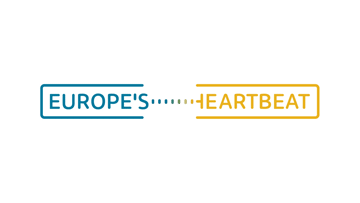The Canadian company Miovision Technologies is advancing the vision of the Smart City – also in NRW.
Every city, large or small, can be a Smart City – with this in mind, Miovision Technologies supports cities and communities on their way to becoming intelligent, networked cities. Founded by three student friends at the University of Waterloo, the company has become an expert in modern traffic concepts. In an interview, Roman Rohrberg, Regional Marketing Manager EMEA, explains why Miovision chose Cologne as the location for its first foreign branch office.
- The term Smart City is all around - In your view, how does a future city look like?
First, let's define what we think a smart city is. I would suggest that a smart city is defined by data and its use by municipal governments to measure if their policies are having the desired impacts and, if not, gain insight as to what might work better.
At Miovision, we believe that traffic data is an ideal place for cities to start their journey towards becoming more data-driven. It’s an area where they already collect data and it’s an area where technology is making it possible to gather more data, more often. More data from more points along the traffic network can help municipalities reduce traffic congestion, improve traffic safety and reduce pollution – all which have a significant impact on the quality of life for citizens.
- Which role does the intelligent traffic management/control play in modern cities?
More people are moving to urban areas. Yet most existing urban areas do not have the space to significantly increase the footprint of their road network. That means cities and towns need to find ways to move more people, safely and efficiently, through the road networks they currently have.
Having the data to understand how people are moving through that network is a start. I say ‘people’ for a reason. Many cities are working to encourage more space- and environmentally-friendly modes of transportation – walking, cycling and e-scooters, for example. So, it’s not enough to measure car and truck traffic. You need multimodal traffic data to understand how to maximize the movement of people – and how to keep everyone safe.
Providing traffic engineers with accurate, multimodal traffic data allows them to see opportunities to optimize their traffic networks – keeping citizens moving.
- How does Miovision help cities on their way to becoming a smart city and in which cities is Miovision currently represented?
Miovision provides the tools needed to accurately and easily measure and analyze multimodal traffic. One of processour most popular products is a portable unit for conducting traffic studies – the Miovision Scout. This includes a camera, mounted high above the street, to maximize accuracy and ensure the unit does not collect identifiable information like faces or license plates. This collects traffic video, which is analysed by our Miovision DataLink service, quickly and accurately turning traffic video into detailed traffic data.
Scout and DataLink don’t just count cars – they can measure vehicles, pedestrians, cyclists and – just released in beta – e-scooters.
How do cities use this data? In the City of Luxembourg, a design firm used Scout’s multimodal capabilities to collect data on how people were travelling into the city – by cars, buses, trams and bicycles. They combined this data with manual-captured data on how many people were sitting in different vehicles. They then used that data to create an awareness campaign: a digital installation to demonstrate how many square meters a person takes up as they move through the city. The installation showed the millions of citizens who saw it that, by using walking, cycling or using public transportation, traffic congestion would decrease, resulting in more space on roadways throughout the city. It’s one of the more interesting ways we’ve seen cities use data to help support public policy.
Luxembourg is just one of the 17,000 municipalities worldwide who have used our products. Thanks to our large – and growing – number of customers, our products have processed more than 23 million hours of traffic video, counting more than nine billion vehicles.
- Since 2011 your company is operating outside of Canada. Why did you choose Germany and specifically North Rhine-Westphalia?
Miovision chose to locate here as its base for markets in the EU. The location provided access to people with the skills we needed; people who are comfortable working across Europe and speaking multiple languages. Also the short distances to air and land travel, enabling us to reach our growing customer base around Europe quickly and easily, was an important factor.
Looking at our Cologne office team today and our growth across Europe, we can say it’s been a great place to start our expansion beyond North America.
- What are your future plans in Germany?
We plan to continue to grow our share of the European market from our presence in Germany.


